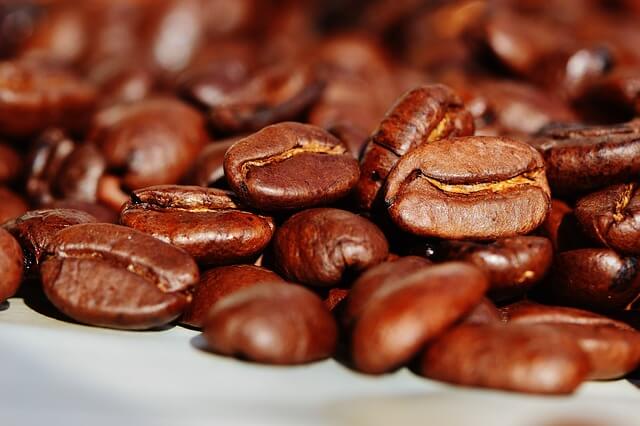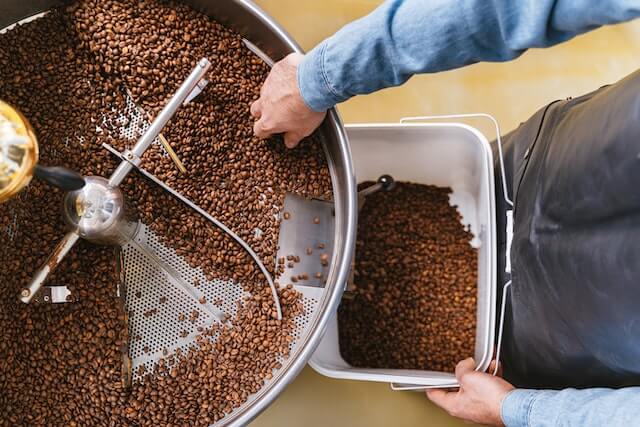For many coffee lovers, brewing coffee is more than just a morning routine. It’s a daily ritual that can make or break their day, and the quality of the coffee is paramount. There are different ways to make coffee, and the type of beans and method of brewing the coffee affects the taste. But there’s one crucial step that’s often overlooked – grinding the beans. While buying pre-ground coffee seems convenient, it may not deliver the best flavor. That’s why we’re going to explore why grinding the coffee beans on your own is worth the extra effort. So keep reading and learn how to grind coffee at home
How does grinding affect the taste of coffee?
Grinding your coffee at home can make your coffee taste better. The right size of grounds will help your drink taste better. You can also choose how much caffeine to put in each cup and add different flavors to make it special. Plus, freshly ground beans of coffee have a much stronger flavor and aroma than pre-ground beans.
Freshness
One of the biggest reasons to grind your coffee beans at home is freshness. Coffee beans are at their peak flavor within days of being roasted, but once they’re ground, they start to lose flavor and aroma. Coffee grounds can go stale in a matter of hours, and it’s challenging to determine how long it’s been sitting on the grocery store shelf. When you grind your beans by yourself, you’re ensuring that you’re getting peak freshness every time.
Control
When you grind your coffee, you’re in control of the size. Different brewing methods require different sizes, and store-bought coffee may not have the correct size for your method. With home coffee grinding, you can experiment with grind sizes and textures to find the perfect cup of coffee for your preferred brewing method.

Flavor
The flavor of coffee is complex, and the way the beans are ground affects the flavor. When coffee is roasted, the oils inside the bean are released, and those oils house many of the unique flavors. Grinding the beans releases more of those oils, and the size of the grind can affect the flavors released.
Cost
Buying pre-ground coffee may seem like it’s less expensive upfront, but in the long run, it can be more costly. The pre-ground powder loses flavor quickly. Buying whole beans can save you money and provide you with a better coffee experience overall since you can grind only what you need.
Health benefits
Coffee is high in antioxidants, which have various health benefits such as reducing inflammation and protecting against disease. However, the antioxidants degrade over time, and a lot of them are lost during processing and packaging. Breaking down coffee beans by yourself allows you to have fresh coffee, and therefore, more antioxidants in your morning brew.
How To Grind Coffee Beans with a Grinder at Home

Coffee is one of the world’s most popular beverages and for good reason. It is rich in flavor and aroma, and it provides a much-needed burst of energy in the morning. One of the most critical factors in making a great coffee drink is the quality of the beans and how they’re ground. let us explore the basics of crushing coffee beans with a grinder, the different types of grinders, and some tips for achieving the perfect grind.
Why is the coffee grind so important?
The grind size of the coffee is essential to the flavor extraction, it determines how much flavor the coffee beans release when brewed, and ultimately, the taste of the coffee. A poor-quality grind can result in an over or under-extracted coffee, which can affect the flavor, aroma, and body. The perfect grind is a balance between convenience and quality. Using the right type of grinder can help you achieve the perfect grind.
Types of Coffee Grinders
There are two main types of coffee grinders: blade and burr grinders. Blade grinders work like a blender (you also can use a blender to grind coffee), with a spinning blade that chops the coffee beans into uneven pieces. Blade grinders don’t produce an even grind, and the friction caused by the blades can result in a burnt taste.
Burr, on the other hand, mills the beans between two plates, resulting in an even grind with consistent particle size. Burr grinders can be further classified into two main types: conical burrs and flat burrs. Conical burrs, which have a cone-shaped plate and a ring-shaped plate, produce larger particles and a coarse grind ideal for French press and drip-brewed coffees. Flat burrs, on the other hand, produce smaller particles, ideal for Turkish, and pour-over brewing methods.
Tips for Achieving the Perfect Coffee Grind
One of the most critical factors in achieving the perfect grind is adjusting the coffee particle size according to the brewing method. For a coarser grind, a conical burr grinder is best. For a finer grind, suitable for espresso, a flat burr is the better choice.
Finally, pay attention to the grinding time. To achieve a consistent grind, grind the coffee for a specific time frame, usually 20-30 seconds.
Ways To Grind Coffee Beans Without a Grinder

If you’re a coffee lover, you know that freshly grinding your coffee is the key to a delicious coffee drink. But what if you don’t have a grinder at home? Don’t worry, it’s still possible to achieve a good grind without a machine. let us show you how to crush coffee beans without a grinder. Whether you’re camping, traveling, or simply don’t own a grinder, there are different ways to grind and crush coffee without a grinder. So, let’s get started!
1. Mortar and Pestle Method
One of the oldest methods of grinding the desired amount of coffee beans is using a mortar and pestle. This method is affordable and effective. To use this method, place a small amount of beans at a time in the mortar and use the pestle to mill the beans. Keep crushing until you achieve the desired coarseness of the grind. This method is best for creating a small amount of coffee powder and is perfect for people who enjoy manual labor.
2. Rolling Pin Method
If you don’t have a mortar and pestle, another great option is using a rolling pin. This method requires a bit more elbow grease, but it’s still easy to execute. Place the beans on a cutting board and cover them with a towel or in a canvas bag of coffee. Then, use the rolling pin to crack the beans. Keep rolling until you achieve the desired coarseness of the grind. This method is best for creating a medium grind.
3. Food Processor Method
Did you know that you can grind the beans using a food processor? This method can create a fine grind, which is perfect for espresso or Turkish coffee. Start by placing a small amount of coffee beans into the food processor. Pulse the beans until you achieve the desired coarseness of the grind. It’s important not to overdo it, as this can create an uneven grind.
4. Hammer Method
If you’re in a pinch and don’t have any tools at home, you can use a hammer to crush coffee. This method is a bit unconventional, but it can get the job done. Place a small amount of coffee beans on a heavy-duty cutting board and cover them with a towel. Then, use a meat mallet or hammer to crush the beans. Keep hammering until you achieve the desired coarseness of the grind. This method is best for creating a coarse grind and is perfect for people who enjoy a rustic approach to coffee making.
Choosing the Right Grind Size

Coffee is not just a beverage, it is an art. One of the most crucial steps in making that perfect cup of coffee is choosing the right grind size. This seemingly small detail can make a world of difference in the flavor and aroma of your coffee. As a coffee lover, your ultimate goal is to make the perfect coffee, every time.
1. Understanding Grind Size
Before we dive into how to choose the right grind size, it is important to understand what it is. Grind size is simply the size of the coffee particles after they have been ground. The grinding process is critical to coffee brewing because it affects the rate at which water extracts desirable compounds from the beans. If your coffee is ground too fine, the water will extract too much and make your coffee too strong or even bitter. If the grind is too coarse, the water will not extract enough and leave your coffee weak and watery.
2. Different types of Grind Sizes
Different types of coffee brewing methods require different grind sizes to achieve the perfect flavor and aroma. For example – Espresso requires a fine grind size, while French press requires a coarse grind size. Pour-over requires a medium-fine grind size, and drip coffee requires a medium grind size. So, the first step in choosing the right grind size is knowing what type of coffee brewing method you will be using.
3. Experimenting with different Grind Sizes
If you are not sure about which grind size to use, start with medium grind size, and adjust it as you go along. Experiment with different amounts of coffee powder, water, and grind sizes until you find the perfect combination. Taste your coffee after each adjustment to see what you like and dislike about each grind size. This way, you will develop a better understanding of grind size and how it affects the flavor and aroma of your coffee.
4. Invest in a Good Quality Grinder
Using a good quality grinder is crucial to achieving a consistent size of coffee powder. Blade grinders are not recommended because they produce an uneven grind size, which affects the taste of your coffee. Burr grinders, on the other hand, mill the beans more uniformly, ensuring consistent particle size.
5. Know When to Replace Your Grinder
Lastly, it’s essential to understand when to replace your grinder. Over time, the blades or burrs dull, and this affects the consistency of the grind size, which affects the taste of your coffee. So if you start noticing inconsistent particle size in your coffee grounds or your coffee starts tasting off, it might be time to invest in a new grinder.
Tips and Tricks for Grinding Coffee

If you’re a coffee enthusiast, then you understand the importance of fresh coffee. Preparing your coffee by grinding whole beans fresh every morning is one of the best ways to improve the taste and aroma of your coffee. With the right coffee grinder, you can get grinds that are even and consistent. However, the perfect cup of coffee starts with properly grinding your beans of coffee.
How much coffee should you grind at once?
How much coffee you should grind at once depends on how much coffee you need for your cup. If you are making one cup, then a smaller amount of coffee should be ground. If more than one cup is being made, then a larger amount of coffee can be ground. It’s best to only grind as much as you need so that the flavor and aroma stay fresh.
How do you ensure a persistent grind?
To make sure your coffee is ground consistently, use a good-quality grinder. A burr grinder is best because it crushes the beans more evenly and makes consistent particles. You can also experiment with different amounts of coffee grounds, water, and grind sizes until you find what works best for the flavor and aroma you want. Finally, replace your grinder when it starts to produce inconsistent particle size or if your coffee tastes bad.
Choose the Right Grinder
The first tip is to choose the right grinder. There are two main types of grinders- blade grinders, and burr grinders. Blade grinders are relatively inexpensive and can be found in most stores, however, they don’t produce a consistent grind. Burr grinders, on the other hand, produce a uniform grind but can be expensive. Choose the type of grinder that works within your budget and preference.
Grind Size Matters
The grind size of your coffee is critical. The size depends on the method of brewing that you use. For example, if you use a French press method, you’ll need a coarse grind. If you use a drip coffee maker, a medium or medium-coarsegrind will work, while for an espresso machine, you’ll need a fine grind. Be sure to adjust the grind size of your beans accordingly.
Use Fresh Coffee Beans
Freshness is key when it comes to coffee. Always use fresh coffee beans when grinding them. Avoid buying pre-ground store coffee as it loses its flavor and aroma quickly. Opt to buy whole-bean coffee and grind what you need.

Grind Immediately Before Brewing
Another crucial tip for grinding whole coffee beans is to grind them right before brewing. A general rule of thumb is to wait no longer than 15 minutes between grinding your coffee beans and brewing your coffee. The longer you wait, the more flavor and aroma will be lost.
Clean Your Grinder
Cleaning your grinder is essential for maintaining the quality of your coffee. When your coffee beans are broken, oil is released, and over time this oil can build up and flavor your coffee. Be sure to clean your grinder regularly to avoid cross-contamination and to keep your coffee tasting fresh.




